SKOVENS ARENA
A team of British architect Zaha Hadid in close collaboration with architecture and engineering consultancy Sweco and Tredje Natur architects has won the competition of ...
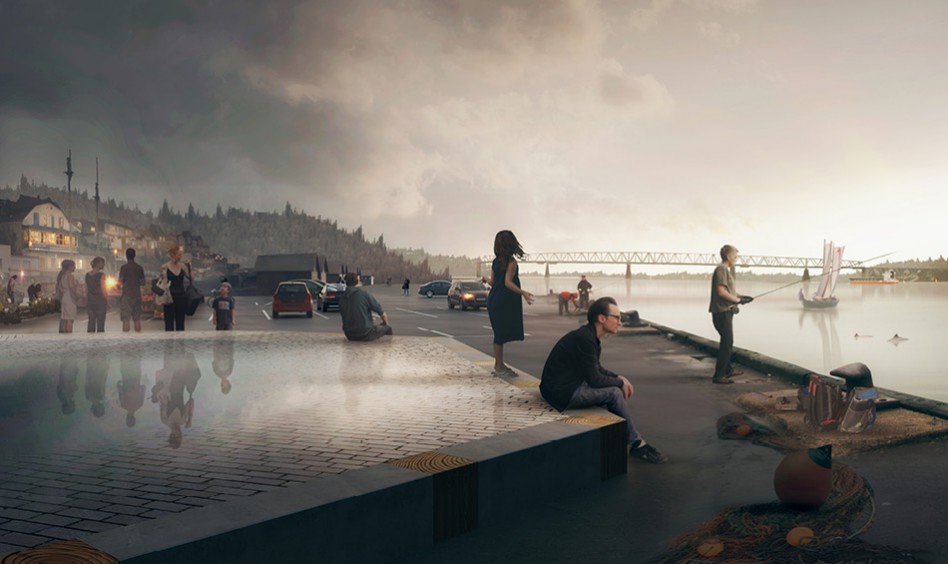

The overall theme for the competition was ‘A Great Climate City’. Tredje Natur’s project is based on a conversation between rain, sea, terrain, and forest. The project is future-oriented, while also connecting the cultural history and natural conditions of the city. The project is founded on engaging individuals, while the overall strategy is to engage and educate people about the hidden connections between city and nature for a dynamic daily life in Middelfart based on nature value- to make the people of Middelfart ‘climate smart’.
– From the judge’s comments
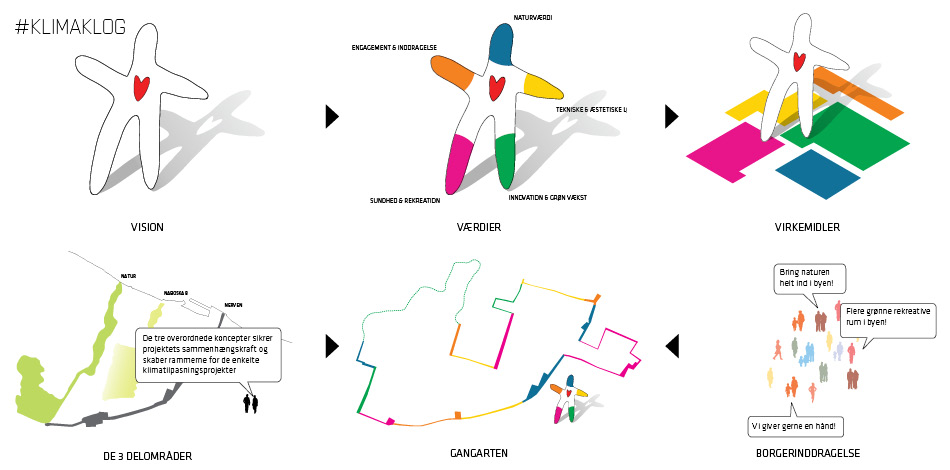
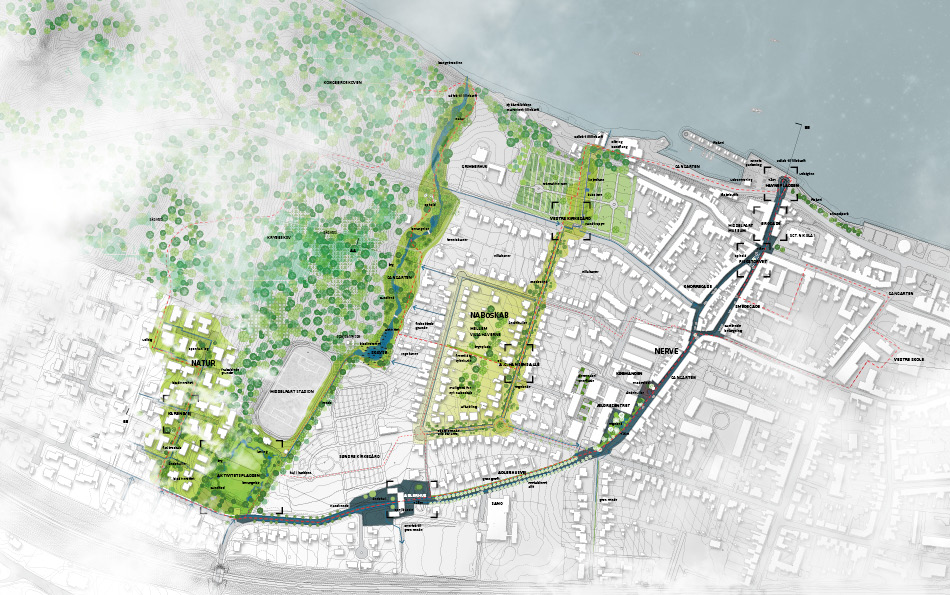
The dialog, comments, and ideas from the local residents show they are aware and knowledgeable about their town. They have a natural concern and enthusiasm with the ‘Climate City’ project. Our team saw this a great resource for value- creation in the project. At the intersection between public investment and private money, we find that Middelfart has unique conditions for creating a number of concrete interventions, based on the knowledge and dreams of the residents.
#CLIMATESMART themes will be visualized by a climate logo. The logo represents each resident’s engagement. Holistic solutions are not possible without all five themes, just as a person is not whole without their head and limbs.
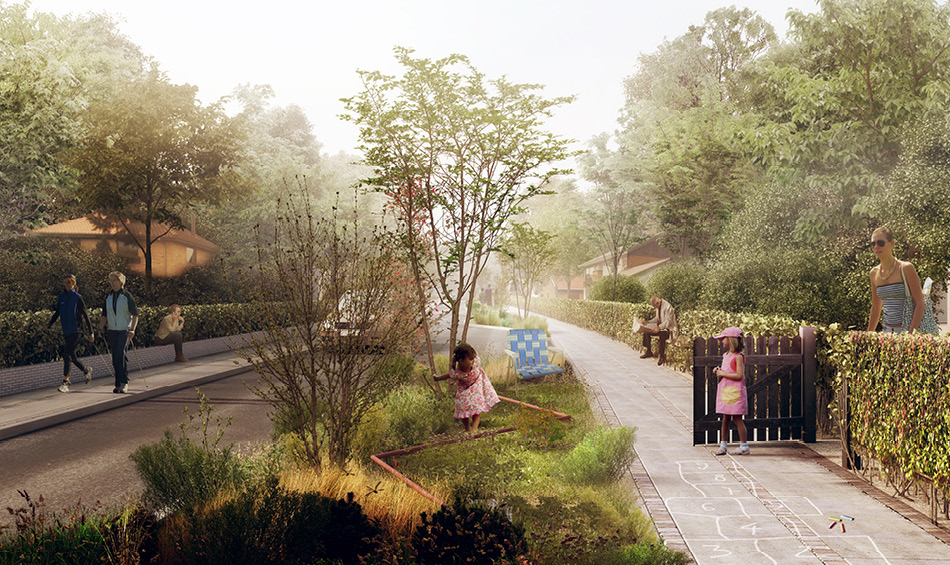
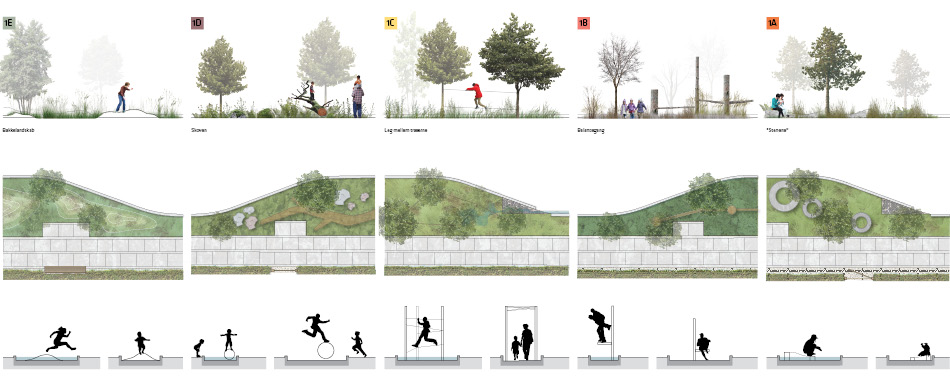
The city has changed throughout the centuries to adapt to the topographical conditions and architectural ideals of the times. From the townhouse and city gates of the middle ages, to the single family suburbs on the top of the hill.
Middelfart is a lovely city. With its unique placement by the water and forest, the residents are some of the happiest in all of Denmark. Their moods will not likely be damped by a flooded basement.
Thinking about of what kind of earth they leave for their children is something that can change people’s mind about climate change. Middelfart can also, as a small city, maintain a strong position in society by following through its ambitious plans to become a climate municipality.
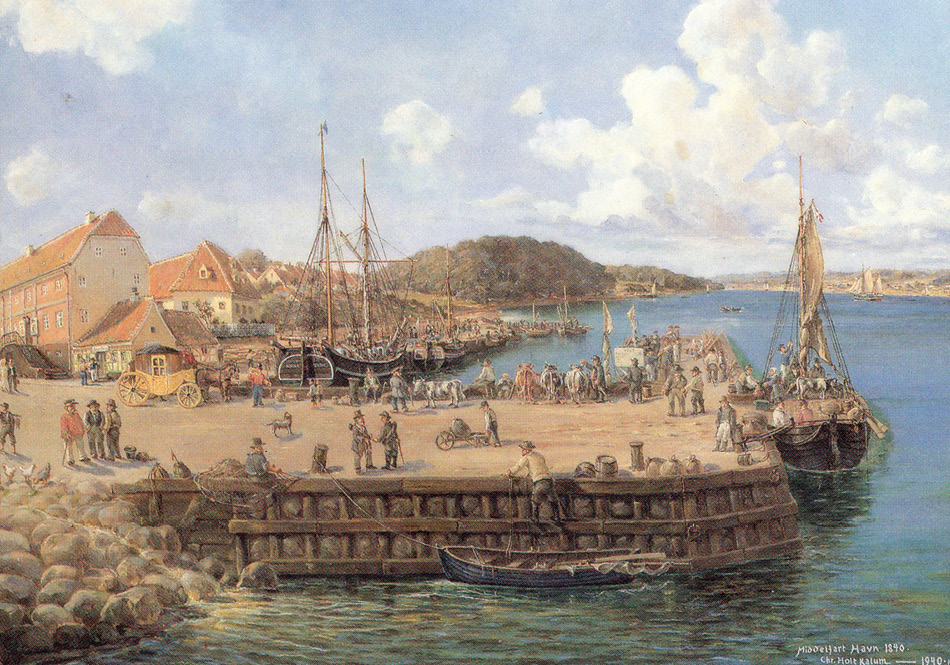
In the medieval core of Middelfart, climate adaptation creates the overall storyline where we are reminded of the past. The buildings on Knorregade and Smedegade have been formed by the sea, and ship-like buildings consumed by currents lie by the the harbor. We would like to support these interesting conditions in our expression of the medieval core.
Last year we experienced the best ‘stjerneskud’, a traditional Danish dish, from the ‘Fiskehuset’ on a cold December day. This shows that not only does the harbor has life year- round, but it is relevant today, centuries after the town’s establishment. We hope with this project to add to this life in Denmark’s most beautiful ‘Climate City’.
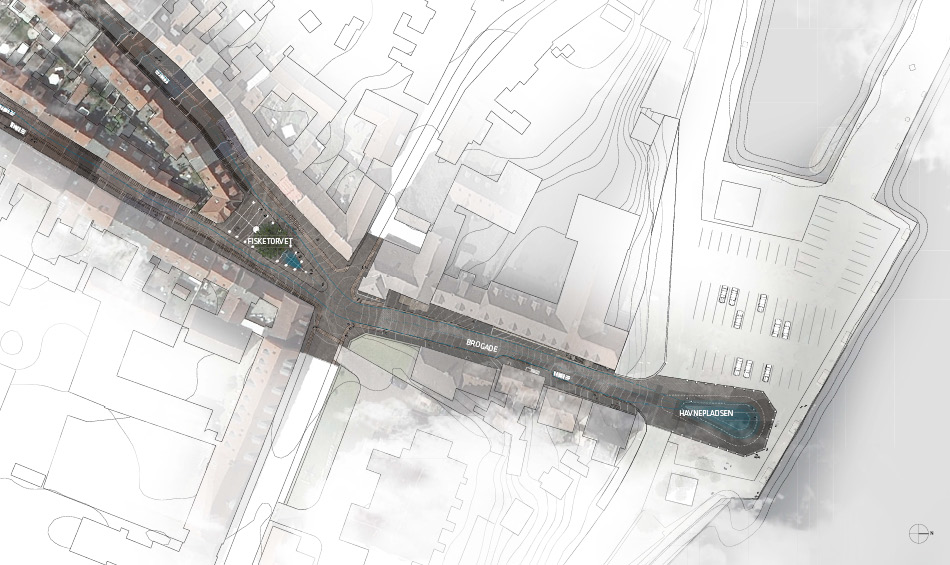
“Man rystes ikke let ud af sine Fuger ved Synet af dette Stykke aa-smalle Bælt, disse smaa, grønne Skove, disse frodige, jævnt stigende Kyster. Alt er venligt, hjemligt, mildt. Men Luften er frisk og sund, denne Yppighed rundt omkring gør Hjærte og Øje godt, og naar Solen daler ned derovre bag de jyske Banker og farver Bæltet som Blod, bliver man ikke let træt af at sidde derude paa Molen eller spasere langs Stranden og betragte, hvorledes Farverne efterhaanden fortoner sig over Himmel og Hav, mens Landet og Skovene rundt om hyller sig ind for Natten i blaalige, røde eller violette Dampe, indtil det alt ligesom synker ned i Sommernattens aandeagtige Dis.”
– Henrik Pontoppidan, 1887
Water will be visibly collected like a thin layer of film. A mechanism will hold the water back and allow it to gather up to maximum capacity, where it then will be lead to the Harbor Square. The idea is that the delay will create a soft play with water that echoes the rhythm of rainwater through the space. The mechanism can be opened all the way when there will be market days etc. where it is inconvenient to get one’s feet wet. The dinghy’s central plank and the cross beam will be placed as ornaments in the floor and will creating seating. This will be a reminder of old Nordic traditions where the city gathers around the town square. The central ‘Dolphin Well’ statue by Hans Olsen and the unique tree are included in the dinghy and are a collective reminder of previous urban qualities.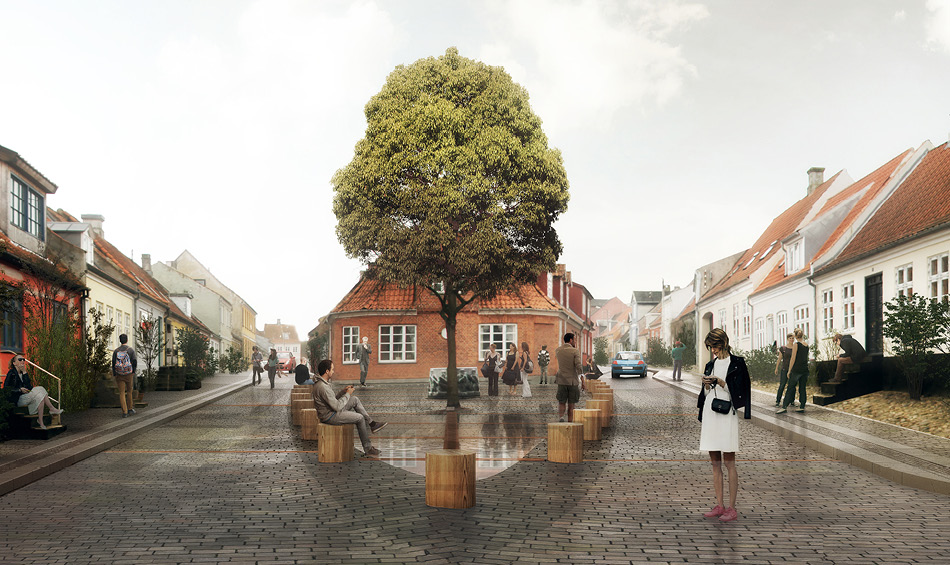
The fascinating form of the buildings and spaces are unique on Fishing Square. The carved form of the ‘smakkejollen’ is the catalyst for the design because it is formed by years of water erosion. We therefore think of the square as a legend and a sophisticated conversation between the city and water, as a hunt for a dolphin.
The main spatial experience at the old harbor is the meeting of the flat harbor and the dramatic slope of the topography. The city is built into the terrain and creates a spatial memory of a section through the terrain of Funen. The horizontal axis is emphasized by the view of the ‘bridge and the open sky’. This experience of the surface and the terrain are crucial in the effect of the Climate City existence on the harbor. The square is the final threshold before the sea and it is obvious to use this space to emphasize weather events, so that when it rains, the square is activated. On the basis of the conversation with the contractor and the jury, we recommend a more subtle staging of the direction of the water on its way to the Fish Square. The water is centralized around the bridge and the harbor. We were inspired by a porpoise’s blowhole when creating the central node around the new bridge, which serves as a collection point for water at the harbor level. When the water is released from the Fish Square, it creates a water event on the bridge, creating a subtle but direct connection to the urban squares.
The harbor and the contact with the water have always been the foundation of Middelfart and will therefore be included in the Climate City. The harbor connects the city to the regional waterbody thereby merging the Climate City with the outside world. This connection is emphasized by the bridge which can create urban life and connection.
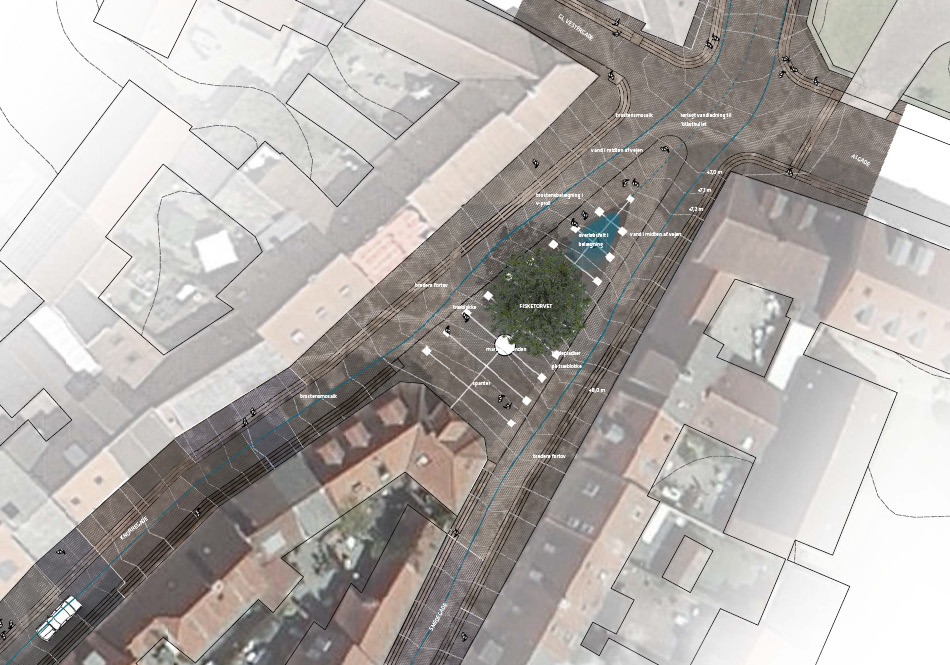
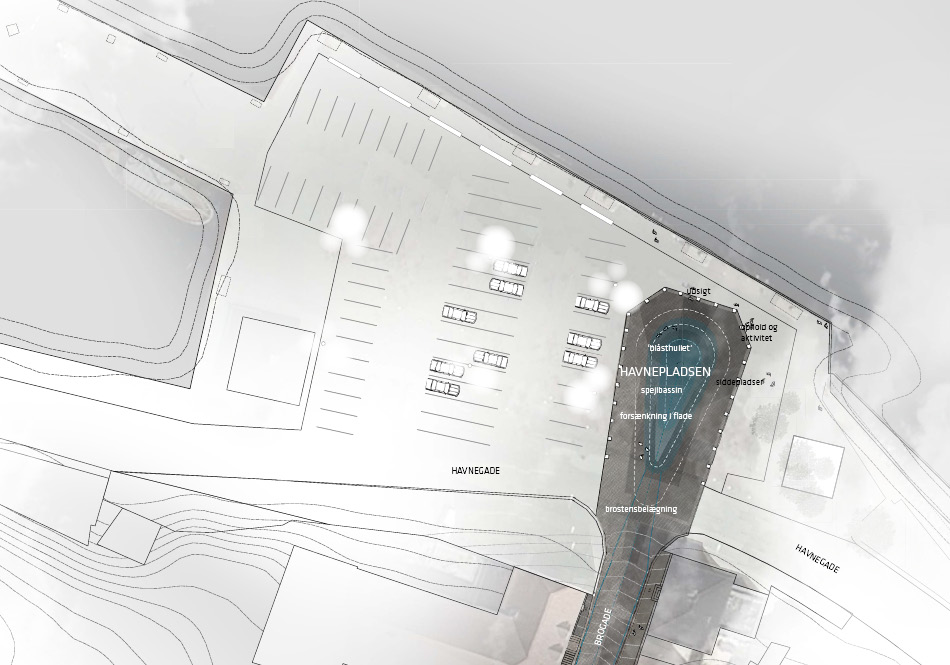
Overall, the project creates a convincing co-creation scenario for each intervention area. The team shows a solid understanding of the conditions and terms of a functional co-creation process. It is positive that the team shows a strong understanding of what dialog based innovation processes with residents is about – and what it will take to live up to their proposal.
– Judges comments
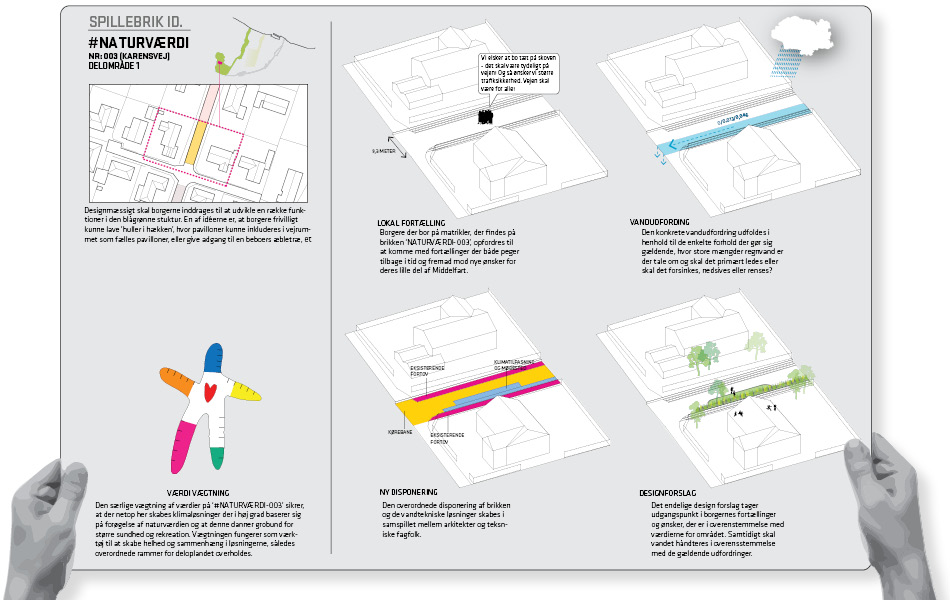
Each piece is a part of the larger puzzle of ‘Climate City Middelfart’. They are unique, but still fit into the bigger picture. We imagine that the pieces create a tool, to maintain and inspire communication with the residents. Every piece is numbered and illustrated objectively in relation to light, wind, water, and dimension. The relevant residents and stakeholders fill puzzle piece with their knowledge of the place and their dreams about the future and connect them with anecdotes about life in the city.
Climate solutions must be enabling, meaning that they must visibly support and incentivize residents to develop local knowledge. By using the puzzle pieces, the proposal ensures a close integration between the 3 levels of the Climate City. (1) The local conditions (2) the whole (3) the climate solution catalog. Every neighborhood in Middelfart thereby acquires a specific style, a rhythm in its physical being, it’s ideals and residents.
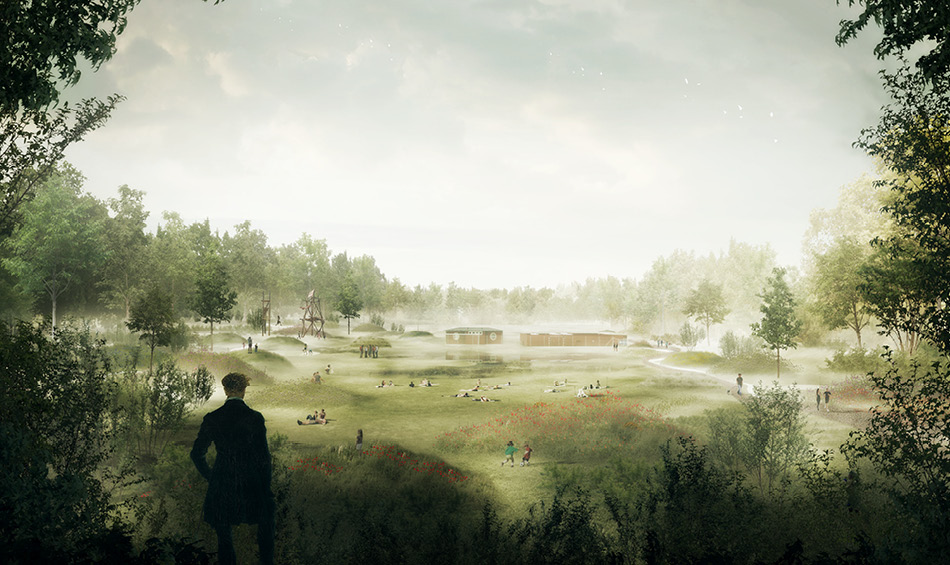
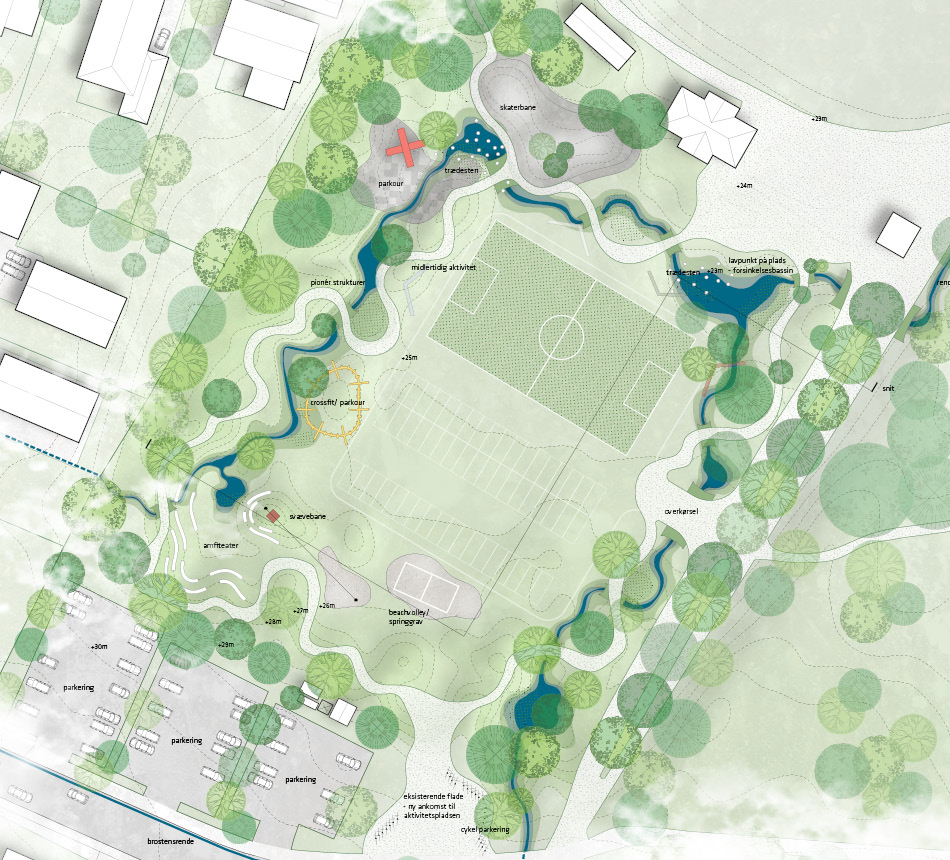
At the same time, it can be difficult to connect the life we live ‘on the ground’ and the incredibly complex problems climate change presents. Water problems in Middelfart are an example of the intersection of daily life and global challenges.
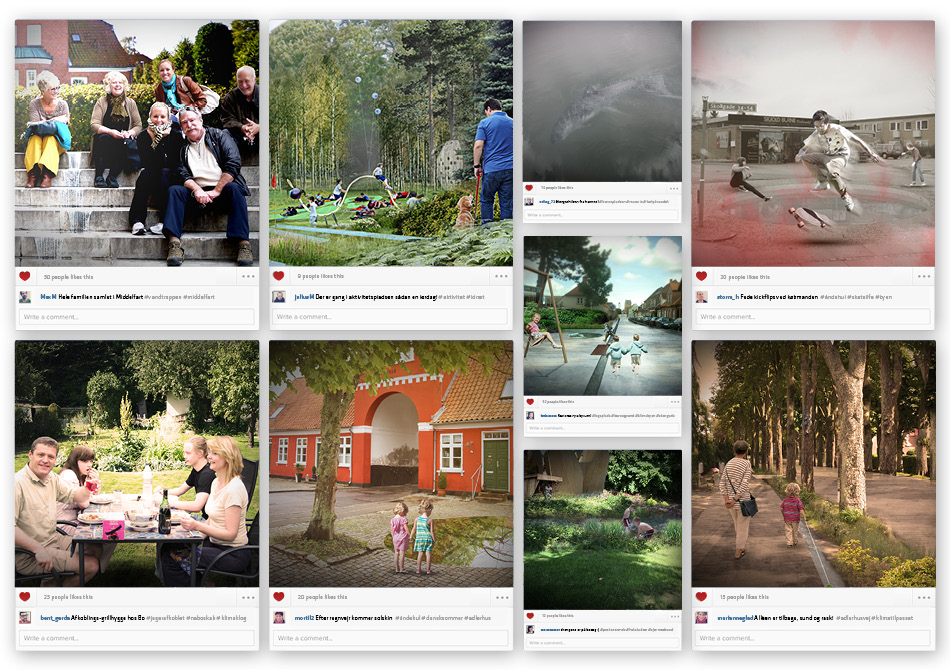
The proposal is built on the fundamental premise that we are drawn to things we can sense. We therefore work with urban spaces that activate the senses. In the Climate City, one is always in contact with environments invite reflection about how things work and fit together.
The thought process is crucial down to the plant choice in each rain garden and the recreational possibilities. In the ‘Climate City’ approach there are new recreational areas for Middelfart, that are enjoyable year round. They are also horizontal landmarks that show holistic solutions to how we secure and develop our urban environments in new climate scenarios.
A team of British architect Zaha Hadid in close collaboration with architecture and engineering consultancy Sweco and Tredje Natur architects has won the competition of ...
We have created 'Undergrowth' - a vision for transforming Kongelunden in Aarhus, Denmark. With Undergrowth we have made a regenerative strategy that supports nature’s ability ...
The future neighbourhood – Lynetteholm – will be a vital part of the climate- and flood protection of Copenhagen and create space for more than ...
In THE BLUE RAMPARTS, we have worked with the area Damsterdiepzone in Groningen - an area that accommodates industry, housing, and businesses. In our vision ...
Ugakei Circles is a sustainable tourism project located on the fringe of one of Japans most populated areas. The project marks a new shift towards low impact regenerative tourism
In a new grand vision for the 40-hectare future development area, Dokken in Bergen, Norway, Third Nature shows high ambitions for the regenerative city in an old logistics port and ferry terminal.
The historical Enghavepark has been transformed and is now the biggest climate project in Copenhagen. With a 22.600 m3 water reservoir, the park is answering a need to handle Copenhagen's current and future challenges with water.
The Norra Bunkeflo area in Malmö, Sweden, can become a sustainable model example for the realization of the UN's World Goals and how we can live up to the 2030 goals of the Paris Agreement.
‘New Angle’ shows how the SDG’s can be translated into practice in the construction industry. It is estimated that the project represents a CO2 saving of 30-50%.
With CPH Common House we propose the world's first upcycled high-rise building
With our master plan for Adamstuen in Oslo, we show that it is not necessary to make a compromise between building and biology in order to achieve an architectural balance in a master plan
ARKENWALK is an ambition to unite art and city with a path that anchors Arken Museum as the town’s urban generator
With the proposal `Karnappen' we have created a distinctive landmark with a green and vibrant facade for Grønttorvet in Valby, Copenhagen
The isolated Vridsløselille State Prison is rethought inside out to become an active and integrated part of the surrounding city life in Albertslund
THIRD NATURE and COWI have made a feasibility study for the City of Copenhagen, highlighting the possibilities and consequences of establishing a traffic tunnel below Åboulevarden
New Islands Brygge School has the potential to become a new and highly interconnected link between the harbor, the nature and the city
The Water Culture House integrates water activities with the cultural and popular everyday life by the harbor and creates unique and distinctive experiences
We create a new and green gathering point in Hyllie that with a station building, housing and a station square strenghtens a livable, diverse and vibrant city life
THIRD NATURE releases a groundbreaking solution to major cities' challenges with flooding, parking and lack of green spaces
With Kunskabsberget, TREDJE NATUR has designed an open, safe and flexible learning environment, with a clear local presence
Værløse Airfield has great potential for creating a grounded everyday life with nature at its core
TREDJE NATUR have created a new masterplan for “Svanemøllens Kaserne” with an understanding of the areas special history as its starting point
The station at Klostergården is a visionary infrastructural project that shows how the construction of a new station can lift up and rethink an entire neighborhood in a city
In the heart of Nordhavn lies the historic port of Copenhagen, Kronløbsøen. A new island rising from the harbour as an alluring mirage
TREDJE NATUR has together with C.F. Møller and Rambøll come up with a new holistic vision for a close sustainable Gustavsberg from the basis of the place’s original and forgotten nature.
TREDJE NATUR and C.F. Møller wins The Future Sølund. Along with Bascon, Transsolar and Smith Innovation they draw and will build one of the largest and most visionary residential projects seen in the history of Denmark
Papirøen has a unique placement in at the inner part of Copenhagen harbour. There is a lot of potential on this prime location setting the bar high on the subject of Copenhagen future city- and nature developments.
TREDJE NATUR have designed a proposal for a new pedestrian and cyclist bridge in Sydhavnen
TREDJE NATUR wins ambitious project on Nordhavn's best building site. On the tip of Redmolen surrounded by water on three sides, a prestige building and urban space is now in the making.
CBS in the city - The city in CBS! Our dogma is about developing CBS as a campus that is integrated into the city
TREDJE NATUR continues to build on the Copenhagen climate adaption plan, and joins the water investment with new strategies for nature, life and community in the city.
Vinge is not just inspired by nature, it is a city which works with nature’s processes and creates nature.
TREDJE NATUR's plan revives Bryggens Bastion with green and blue elements as the central values in the neighborhood. A connecting corridor in the project becomes the neighborhood’s new hub.
TREDJE NATUR won 2nd place in the Middelfart Climate City competition, along with Entasis and Grontmij.
TREDJE NATUR designs a collaborative platform presenting new solutions to future water challenges
Our winning proposal for the development of Almegård Barracks is based on a holistic, local concept where the main transformative force is found in the individual users and inherent qualities of the site.
Tredje Natur thinks Copenhagen’s Harbor should be a lively, accessible, productive and recreational area in the city.
The climate district in Østerbro shows the climate adaption of the future and the development of the existing city.